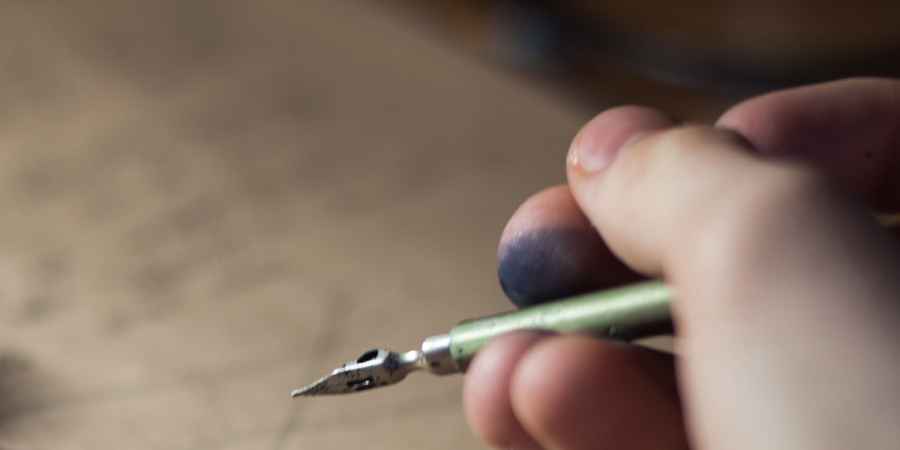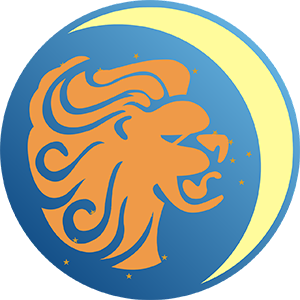How You Can Use Automatic Writing To Attempt To Communicate With Spirits

Photo: © John-Mark Smith
Automatic writing is a form of divination that involves a participant allowing their hand to be guided by spirits to write messages or answers to questions. Let's go right back to the basics and explore the beliefs, misconceptions, paranormal theories, and logical contradictions that relate to this popular method of spirit communication.
Traditionally, automatic writing was associated with séances, where mediums attempted to communicate with spirits. It served as a means to convey messages from the deceased or spiritual entities. However, as interest in the paranormal grew, especially with the advent of modern ghost hunting, automatic writing found a new role.
With the decline of séances, automatic writing has found a new home as part of paranormal investigations. It is used as a method to communicate with spirits at a haunted location. Investigators might use this technique to gather information about the history of a place or the identities of spirits.
Automatic writing can be carried out as a solo experiment using nothing more than a pen or pencil and some paper. Other practitioners choose to use an automatic writing planchette. These resemble their Ouija counterpart but are designed specifically for writing, and like a Ouija board, more than one person can join in. Typically made of wood or plastic, it includes rollers or wheels for smooth movement and features a hole for inserting a writing implement. This planchette is placed on a large sheet of blank paper on a flat surface. Participants then lightly touch the planchette, inviting spirits to convey their messages through written words instead of spelling them out.
The underlying concept is that spirits are believed to guide the planchette or pen, allowing it to move freely across the paper, creating words, phrases, or even more complex messages. This could involve the spirit exerting a form of kinetic energy or influencing the energy fields around the participant's hand to guide the writing instrument.
From a psychological perspective, drawing from the ideas of Carl Jung, some suggest that automatic writing taps into the collective unconscious, a reservoir of shared human experiences and knowledge. The messages created through automatic writing could be knowledge fed subconsciously to the writer through a connection to this wealth of knowledge.
Others believe that the movement might be the result of a psychic connection. In this scenario, the spirit communicates telepathically with the participant, who then unconsciously writes the messages received. This process is a form of channeling, where the medium serves as a conduit for the spirit's messages.
It's for this reason that automatic writing is often seen as a form of mediumship, where the individual acts as a conduit for messages from spirits. In this context, some level of mediumistic sensitivity or ability might be considered beneficial or even necessary. This sensitivity could enhance the individual's ability to connect with the spirit world and receive clearer, more coherent messages. Others believe that automatic writing can be attempted by anyone, regardless of their experience or belief in mediumship.
Automatic writing has a lot in common with Ouija boards since both are used as tools for spirit communication. In both cases, participants use a tool to spell out or write messages believed to be from spirits. There is one big difference between these two methods, however, and that's the reputation they have. While automatic writing is considered safe and harmless by most, Ouija boards are often seen as a sinister occult tool fraught with potential dangers.
Like automatic writing, Ouija boards gained popularity during the late 19th and early 20th centuries during the spiritualism boom, but unlike automatic writing, they have since developed a reputation tinged with negativity and fear. This shift was partly due to an increasing association of the Ouija board with negative supernatural experiences, partly fuelled by their portrayal in horror movies and literature. This portrayal in popular culture has cemented a more sinister reputation for Ouija boards compared to automatic writing.
Automatic writing is generally a personal experience, often performed alone, which might lend it a more introspective and benign quality. In contrast, Ouija boards are typically used in groups, which can lead to more dramatic and emotionally charged sessions. The group dynamic can amplify fears and expectations, potentially leading to more intense or perceived negative experiences.
Some argue that the movements in automatic writing are subconscious actions by the participants rather than the work of spirits. This explanation is based on a psychological principle known as the ideomotor effect. This is when a person's thoughts, beliefs, or expectations unconsciously influence their physical actions.
In the context of automatic writing, the ideomotor effect could suggest that the movements of the hand holding the writing instrument or touching the planchette are not controlled by spirits but by the subconscious mind of the individual. This effect is also used to explain the movements of the planchette on a Ouija board.
Furthermore, some psychologists believe that automatic writing is an expression of the subconscious mind. They believe that the act of writing without conscious thought allows suppressed thoughts, memories, and emotions to surface. This theory suggests that what seems to be communication from spirits might actually be the individual's internal mental processes being externalised.
In some cases, automatic writing has been deliberately faked, especially during the peak of spiritualism. Mediums were known to employ deceptive practices like 'hot reading' to produce convincing messages from the spirits. This involved gathering personal information about attendees beforehand, which they would then reveal during the séance.
If you're interested in trying automatic writing as a method of spirit communication, we've put together a simple, low-cost step-by-step guide below.
Step-By-Step Guide To Automatic Writing
Step 1: Preparation
Select a quiet and comfortable location, preferably one where paranormal activity has been reported. Ensure the area is free from distractions. You'll need a pen or pencil, a large pad of paper, and a flat surface like a table. Some prefer to use a planchette designed for automatic writing, but it's not mandatory. If possible, set up video and audio recording equipment to document the session. This can be useful for reviewing and analysing the session later.
Step 2: Establishing The Right Atmosphere
The process of automatic writing often starts with the individual entering a meditative state, aiming to open a communication channel with the spirit world. However, not everyone feels at ease or skilled enough to reach this state. In such cases, focus on creating a calm and relaxed environment.
Dim the lights to create a calming atmosphere, which can help in achieving a more focused state of mind. Engage in relaxation techniques. Deep breathing, meditation, or any method that helps you achieve a calm and focused state is beneficial. Clearly set your intention for the session. This could be to communicate with any spirits present or to seek answers to specific questions related to the location or reported activity.
Step 3: Initiating The Session
Begin by gently holding the pen or placing your fingers on the planchette, keeping your grip relaxed. Initiate the session with a simple, open-ended question to help establish a connection. Try to clear your mind and let your hand move freely without consciously guiding it. Actively engage with the spirit by continuously speaking, asking questions, or encouraging the spirit to communicate. Be patient, as it may take some time for your hand to start moving. Remember, the movements might be subtle at first and can gradually become more distinct as the session progresses.
Step 4: During The Session
If possible, have another team member document what is being written or speak aloud any words or messages that come through. Once you feel a connection has been established, you can ask more specific questions if desired.
Step 5: Concluding The Session
Once you feel the session has come to a natural end, or if you decide to stop, thank the spirits that may have communicated. Consciously decide to end the communication. This can be a mental affirmation that the session is closed, then put down the writing instrument or break your contact with the planchette.
Step 6: Analysis And Follow-Up
Carefully examine the writings by looking for coherent messages, answers to your questions, or any relevant information. Check any information received against historical records or known facts about the location. Share and discuss the results with your team and friends. Different perspectives can help in interpreting the data, especially if some of the writing is unclear. Listen to and watch any recordings made during the session to look for any anomalies or additional evidence of paranormal activity.
More Essential Parapsychology View All
Related Content
Daily Horoscopes
You May Also Like
























